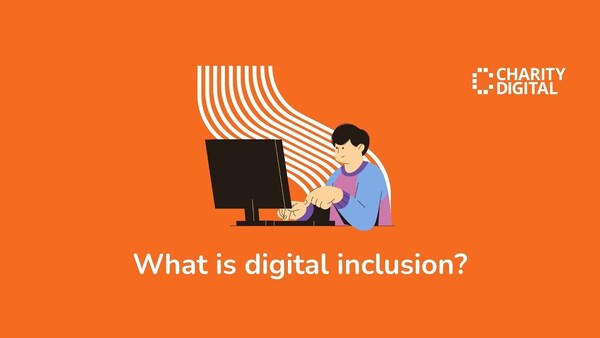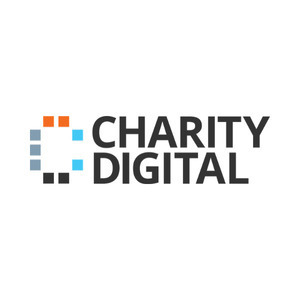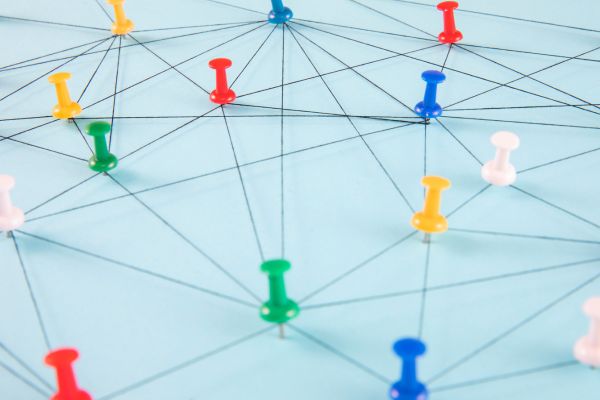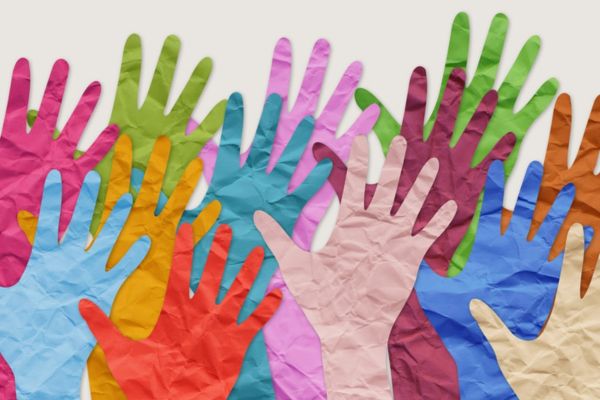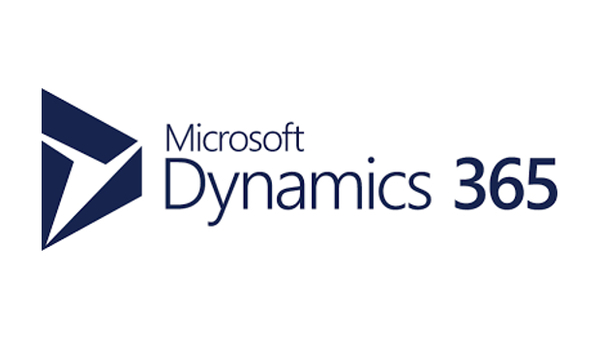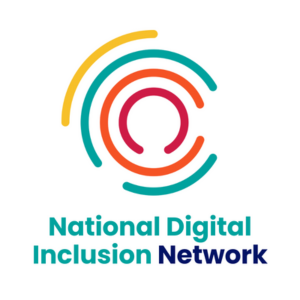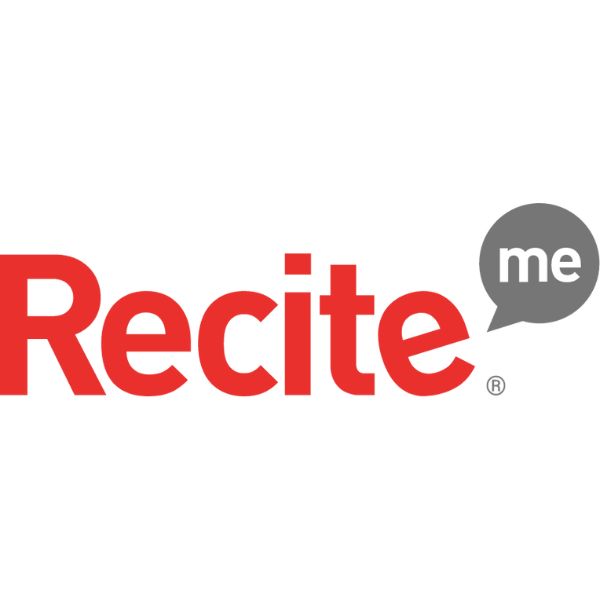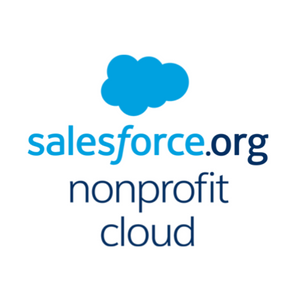Insights
INSIGHTS
All Topics
My Account
Everything you need to know about digital inclusion in 2024
What is digital exclusion, why does it matter, and what can be done about it? In this article, we explore the answers through the themes of digital availability, access, and participation
Click to listen to articleplay_arrow31:16
It is easy to take digital for granted. For many, digital tools such as smartphones, laptops, and the internet are seamless additions to their lives, creating opportunities, convenience, and connection. Everyday processes such as accessing healthcare, shopping, and banking are taking place – now more than ever – in the digital world.
But it is a mistake to imagine that digital is a neutral, easy, or constant presence in everyone’s lives. For a range of reasons, many are unable to benefit from using these tools, leaving them excluded from the rich and diverse online world that many now consider the norm.
This is pertinent to charities, who often provide services to already marginalised people. Perhaps unsurprisingly, it is these same groups of people who are most likely to be digitally excluded, and are thus facing increased inequalities.
In this article, we explain what digital inclusion means, how digital exclusion is manifesting as we enter 2024, and what can be done to make meaningful change.
Skip to: Who is digitally excluded?
Skip to: Digital inclusion means availability
Skip to: Digital inclusion means having meaningful access to the internet
Skip to: Digital inclusion means being free to participate in the digital world
Who is digitally excluded?
Around the world, different levels of availability of digital infrastructure leads to different levels of availability of the internet. Lower availability is disproportionately likely in landlocked areas, remote areas, disaster-prone areas, and island states.
This can be due to having less access to enabling infrastructure like electricity or roads, difficulty in acquiring the additional supports needed for fibre optic cables, or terrestrial infrastructure being unsuitable for that particular area.
According to the International Telecommunication Union (ITU), 2.9 billion people are digitally excluded worldwide. Of these people, an estimated 96% live in “developing” countries. Women also represent a high proportion of this group, with roughly four out of five living in the world’s least developed countries still offline.
Who is digitally excluded in the UK?
In 2023, the UK Communications and Digital Committee reported that an estimated 1 million people have cut back or cancelled their internet packages in the last year due to affordability issues.
In 2022, Lloyds Bank found that the cost-of-living crisis was impacting 35% of people (around 18.7 million) in their ability to go online. In September 2022, 29% (an estimated 8 million households) chose to step back from broadband and digital bills to save money.
In 2020, households with one adult aged 65 years or over had the lowest proportion (80%) of internet connections. Age UK is one charity helping older people increase their digital skills and confidence to make the most of the digital world.
Some of the key factors that can cause someone to be digitally excluded are age (both children and older adults), socio-economic status, disability, and region of residence in the UK.
The Great British geography of Internet use and engagement maps out online behaviour in the United Kingdom. In part, this reflects differing levels of availability, for example reflecting lower internet use in rural areas which may face constrained internet speeds.
However, the creators also note a range of other factors that influence the geography of internet use, from whether users in a particular area see the value of the internet, the age demographic of a certain area, and the socio-economic characteristics of people living in a particular area.
Ofcom found that nearly one in five (18%) internet users access the internet only through a smartphone. It comments: “As some devices are less well suited to certain online activities, such as filling in forms, users who exclusively go online via a smartphone can face a risk of digital exclusion.”
In June 2023, the House of Lords Select Committee on Communications and Digital stated that the UK government has “no credible strategy” to tackle digital exclusion, with its most recent Digital Inclusion Strategy published in 2014.
According to the 2023 Charity Digital Skills Report, 14% of charities are worried about excluding people from digital services, whilst 13% find getting their clients online challenging. Meanwhile, reaching and meeting the needs or more diverse users has travelled up the agenda this year, with 45% of charities claiming this as a key priority.
Digital inclusion means availability
One element of digital inclusion is the availability of basic physical objects and structures that allow people to connect to the internet, for example smartphones, computers, fibre optic cables, routers, switches, hubs, and satellite.
Availability also encapsulates the speed and quality of the internet, and the ability to use relevant digital services effectively – such as to study, work, use banking services, and shop online.
The ITU has found that while 95% of people around the world could theoretically access a 3G or 4G mobile broadband network, billions of them do not connect. This is due to other factors such as affordability, lack of digital skills or appreciation of the value of online connection, lack of content in local languages, and interfaces that demand literacy and numeracy skills that many users do not possess.
Digital inclusion means affordability
Digital affordability is about ensuring that costs don’t stand in the way of anyone’s ability to access digital devices, the data required to access the internet, and key online services.
The UN Roundtable established that the price of enabling services such as electricity can impose a barrier to people to meaningfully use digital.
It states that the cost of connecting should take into account the income level of users, particularly those who are underserved or face barriers to inclusion and connectivity. It should also consider the different amounts of data required to engage in different types of online activities, and the fact that income varies significantly between groups in society, such as between men and women, older people and working people and those who don’t have disabilities and those who do.
In addition to earning less on average than non-disabled people, people who have disabilities can face additional barriers to digital due to the costs of assistive technology.
The Digital Poverty Alliance is working to end digital poverty by 2030. They say, “digital inclusion is no longer something that’s ‘nice to have’ – it’s an essential. And being cut off from digital isn’t just an inconvenience – it compounds and exacerbates poverty. That’s no longer something we can ignore if we’re interested in a just society”.
Their Global Community Hub is used as a central place for discussion and collaboration: “It is a forum where cross-sector partners, champions, and people with a diversity of views and experience can come together to learn from one another, share best practice and tools, remove duplication of efforts, and co-create solutions where there are gaps.”
The Good Things Foundation’s National Databank provides free data in partnership with Virgin Media O2, Vodafone, and Three. This is organised through local community organisations in the charity’s network, who can make individual assessments and provide people with data voucher codes that can be used to get the data they need.
The Good Things Foundation’s National Device Bank provides devices to people who need them. Organisations can donate laptops, desktops, and smartphones, which are then refurbished and given to those in need of a working device.
To support the digital inclusion of service users, charities could collaborate with national and local networks such as these.
Tackling availability and affordability of digital in the charity workplace
For charities to deliver their services, digital tools have become increasingly fundamental – whether that’s to communicate with service users, donors, volunteers, or employees, to ensure secure handling of users’ personal data, or to increase efficiencies and ensure more funds are directed to achieving the charity’s mission.
But it is common for charities to be challenged by the availability and affordability of digital, themselves unable to make the most of its benefits.
Indeed, the Charity Digital Skills Report 2023 found that while charities’ need for funding has increased significantly in 2023, this need is not being met by funders. Nearly half of charities (49%) said they urgently need funds for devices, software, and infrastructure.
The report also found that higher proportions of specific groups are facing challenges linked to the cost-of-living crisis and are struggling to find funds to invest in digital infrastructure.
Charity Digital helps charities with digital availability and affordability through providing access to free and discounted software and hardware offers. As a registered charity ourselves, it is our mission to drive the charity sector forward with digital tools and resources.
Some of our products can be used to support digital inclusion among service users. For example, we offer Windows Pro Full Operating Systems, Office Standard, Office for Mac, and more specifically for use by charities’ beneficiaries.
Our cyber security products such as Avast Business Antivirus also support digital inclusion by ensuring that charities are defended against cyber threats and able to protect their service users’ information – supporting them to participate safely online.
Digital inclusion means having meaningful access to the internet
Meaningful access to the internet is when an individual’s practical online needs are met, as regularly as is needed for their own and others’ benefit. The UN Roundtable states that “Daily access…is a minimum requirement to see real benefits for work, education, and communication.”
This includes access to physical equipment such as computers and smartphones, but also goes further into how regularly and intensely a person can use the internet, digital accessibility, whether users have the required skills to use digital tools effectively, and whether there is relevant content for them in local and relevant languages in the appropriate script.
Digital inclusion means accessibility
Access to digital includes making sure the digital experience is designed to be used effectively by everyone regardless of gender, age, ability, or location.
In 2022, Lloyds Bank found that having an impairment has an impact on how able someone is to complete digital tasks labelled as “basic”. This depends significantly upon the type of impairment a person has, for example sensory impairments are 22% more likely than mental health to have an impact. Having multiple impairments also makes a person 12% less able to complete “basic” digital tasks.
As per the social model of disability, it is not someone’s impairment or condition that disables them, but the barriers created by society. These barriers stop people from having equal access to the world around them.
In the case of digital inaccessibility, these barriers are created by the design of digital tools and the internet failing to meet the access needs of people who have disabilities. This reflects social biases towards people with disabilities, with 60% of people underestimating how many disabled people there actually are, for example.
The UN Roundtable on Digital Inclusion found that digital accessibility can be implemented by legislators, policy-makers, ICT providers, platform creators, and other stakeholders.
In the case of charities, digital inaccessibility can mean that service users who have disabilities are less able to access important services. It has been found that people who have disabilities are over 50% more likely to face barriers to accessing digital and online services than people who don’t have disabilities, worsening existing inequalities.
It can also impact workforces in the charity sector and beyond, with some people less able to do their job as effectively due to digital accessibility barriers.
Finally, it can impact people who want to support charity causes such as through volunteering or donations. According to a 2023 survey, 55% of UK consumers say they have discarded a purchase due to accessibility issues either online or instore.
More than half (58%) of charities consider their products and services “accessible to some extent”, while 53% feel they are monitoring accessibility and diversity of users effectively, according to the Charity Digital Skills Report 2023. This still points towards 42% whose products and services are not “accessible to some extent” and 47% who are not monitoring accessibility and diversity of users effectively.
The charity Scope explains that organisations need to embed accessibility in their working processes and culture, with senior leaders making sure that content creators, designers, and developers have the correct training, understanding, and attitude toward inclusive design.
The charity AbilityNet has services designed to help charities connect online with service users who have disabilities, and for becoming a disability inclusive workplace.
As Tim Berners-Lee, inventor of the World Wide Web, states: “The power of the Web is in its universality. Access by everyone regardless of disability is an essential aspect.”
Digital inclusion means having the right skills
In 2023, the UK Communications and Digital Committee found that 2.4 million people are still unable to complete a single basic digital task to get online, and 5 million workers will be acutely under-skilled in basic digital skills by 2030.
Meanwhile, Lloyds Bank’s 2022 Consumer Digital Index found that 20% of unemployed respondents could not do any of the digital tasks required to be proficient at work.
In addition, higher digital capabilities have been linked with higher earnings, financial wellbeing and resilience, and being more able to access core services such as healthcare, civic services, financial services, and utility providers.
The Charity Digital Skills Report 2023 found that supporting clients with digital skills is a top priority for 51% charities lead by black people, and 42% of those supporting black communities, other racialised communities, asylum seekers, refugees, and migrants. This is higher than other types of charities, as only 27% of all responses considered this a top priority.
The 2022 Consumer Digital Index by Lloyds Bank found that when it comes to the foundational skills required to go online, 13% of UK residents could not set up a connection to a Wi-Fi network on a device, 10% could not use the different settings on a device to make it easier to use, keep their login information and passwords for a device and any accounts secure, or find and open different applications, programmes, or platforms on a device.
9% could not update and change their password when prompted to do so, and 8% could not turn on a device and enter any account login information as required. 8% could also not open an internet browser to find websites.
The most likely task for a person to complete was to be able to use the available controls on a device, such as a mouse, keyboard, touchscreen, and trackpad – with only 7% unable to do so.
Going beyond foundational skills, global education practitioners Bernie Trilling and Charles Fadel define a full range of skills needed to engage effectively in the 21st century’s “Knowledge Age”:
- Learning and innovation skills: critical thinking, problem solving, communication, collaboration, and creativity
- Digital literacy skills: Information, media, and ICT literacy
- Career and life skills: flexibility, adaptability, initiative, self direction, social and cross-cultural interaction, productivity, accountability, leadership, and responsibility
The Good Things Foundation’s free online platform Learn My Way helps people gain digital skills and improve their digital literacy. The charity’s Digital Inclusion Network supports people to learn digital skills with the help of local organisations.
Meanwhile, the charity Citizens Online engages Digital Champions to provide personalised one to one support to digitally excluded people.
As noted by the Chair of the House of Lords Select Committee on Communications and Digital, digital inclusion is a moving target. Technology is always developing, meaning people will always need to develop new skills – even young people.
Why are critical skills important?
Participating online effectively requires a range of critical evaluation skills in order to avoid risks such as misinformation and disinformation, phishing, and scams.
In 2023, Ofcom found that 60% of social media users were confident and able to identify a fake social media profile but that less than half (46%) were confident and able to recognise search engine advertising.
When it comes to the truthfulness of online information, 77% of internet users said they thought about whether the information they find online is truthful. But when these users were shown a genuine social media post, people couldn’t agree on whether or not it was valid. This suggests that while users most users reportedly think about the truthfulness of online information, they are not necessarily accurate in actually identifying whether information is true or false.
Three quarters of internet users were both confident and able to identify a suspicious email. Those aged between 16 and 34 were more likely to be confident but not able, meaning that they were at greater risk of making an error in judgement.
To start building your own critical evaluation skills online, check out our guide to fact-checking content.
Developing digital skills in the charity workplace
The workplace has increasingly become the place where new digital skills are developed. Danny Stacy, the UK Head of Talent Intelligence at the job search and hiring platform Indeed, has told the BBC: “Digital literacy – and employers’ demand for digital skills – has evolved as the economy and labour market has become more digitised. What used to be seen as a bonus is now a critical component of virtually every role.”
And demand for new digital skills in the workplace has a positive impact on employees. Lloyds Bank found that people gained digital confidence primarily from higher digital expectations in the workplace and having an interest in improving future job prospects.
According to the Charity Digital Skills Report 2023, however, the cost-of-living crisis has meant less funds are available for charities to spend on tools and upskilling, particularly those in the earliest stages of engaging with digital.
While 36% of charities say they need funding for training staff and volunteers, 35% say they need funding to bring in external expertise – an increase from 25% in 2022.
Charity Digital’s content and events are designed to help with building digital skills. We have a wealth of articles, podcasts, videos, and webinars covering the key digital skills needed in the charity sector, from fundraising to finance, cyber security to leadership. We promote knowledge sharing across the sector through our Charity Spotlight interview series.
We also serve those 56% of charity professionals who say they are poor at keeping up to date with digital trends, covering tech trends as they emerge as well as the role of digital in other topical subjects such as climate action and the cost-of-living crisis.
Our events – such as our Digital Fundraising Summit – are also opportunities for charity professionals to learn digital skills to drive their mission.
Another charity working to support digital skill-building in the charity workplace is Digital Candle, who provide a free service where charity professionals can have a one-hour call with a volunteer digital expert.
In 2023, many charities have become interested in using artificial intelligence (AI) in their work. The Charity Digital Skills Report found that 78% agree that the technology is relevant to their charity and could transform it, however 73% also say they don’t feel prepared to respond to the opportunities and challenges it brings. 52% want to look into AI more but are constrained by lack of time, resources, and skills.
The report also noted that more large charities (64%) are currently using or plan to use AI compared to small charities (44%), commenting: “This indicates how AI could potentially create inequalities if larger charities are more likely to benefit from it.”
In 2024, developing the right digital skills will be key to charities responding to new artificial intelligence tools effectively.
Digital inclusion means being free to participate in the digital world
As well as exclusion that occurs due to practical factors such as not being able to afford necessary technology, or not having the necessary digital skills, another significant barrier to access is where the digital environment is hostile, unsafe, or otherwise unsuitable for people to participate.
The internet is a space where exploitation and exclusion can occur, posing barriers especially for those in marginalised positions or people who are in situations of vulnerability. This can include targeted tactics of exclusion against specific groups or individuals.
Ways that people can be excluded from meaningful participation include online gender-based violence, online harassment, cyberstalking, cyberbullying, trolling on social media, misinformation and disinformation campaigns, phishing, hate speech, censorship, surveillance, data exploitation, and internet shutdowns.
An example of a charity tackling digital participation is Glitch, who are working to end online abuse through training, research, workshops, and community building. Their free resources include guides to being an Online Active Bystander, documenting online abuse, dealing with digital threats to democracy, and more.
How does cyber security support digital inclusion?
A key part of the ability of all people to participate online is to ensure that they feel safe when doing so. The UN says that users of the internet “need to be able to trust technology companies and governments to safeguard fundamental freedoms and rights online as well as their data and privacy, and that their personal data is used only with their consent” – particularly those who are marginalised and are more likely to be targeted by malicious actors online.
The Cyber Security Breaches Survey 2023 found that nearly a quarter (24%) of charities had been victims of cyber breaches or attacks in the last 12 months. At the same time, improving data security, privacy, and GDPR compliance has become more of a priority for charities in 2023, rising from 35% to 46%, according to the Charity Digital Skills Report.
Some key cyber security resources for charities are our on-demand webinars, “Cyber security on a budget” and “How to protect your charity online”, which share insights from the National Cyber Security Centre (NCSC) and experts from within the charity sector.
In terms of public cyber security, the UK office of National Statistics has found that of those adults who own a smartphone for private use, 17% did not have security on their smartphone, and a further 32% did not know whether they had security.
In 2022, Lloyds Bank found that around 10% (around 5.3 million) people are unable to keep login information and passwords safe.
It also found that 27% of people are digitally disadvantaged and under-confident, and that this group is more likely to have been scammed multiple times and to have been victim to impersonation scams, with fraudsters exploiting their lack of confidence online.
Having insufficient cyber security can increase individuals’ vulnerability to cyber crime. The NCSC provides more information on how individuals can be more cyber secure.
How does digital impact mental health and wellbeing?
In Ofcom’s Adults’ Media Use and Attitudes Report 2023, the majority (69%) of internet users agreed that the benefits of being online outweigh the risks. It also found that being online offers opportunities for learning, education, and connection.
Nearly eight in ten internet users (78%) had been online to support their wellbeing, with the most popular activities being looking up health symptoms, for relaxation, and for healthy eating and nutrition.
However, it also found that opinion was mixed when it came to the mental health impact of using online communication platforms. While 35% agreed that these platforms were good for their mental health, 24% disagreed, and 40% neither agreed nor disagreed.
Just over half (51%) of social media users aged between 16 and 24 thought they spent too much time on social media. This age group were more likely than average to actively manage the time they spent online: 36% had taken a deliberate break from using any social media apps and 32% had deleted apps to avoid spending too much time on them.
Mind’s guide Looking after your mental health online explains how individuals can balance both digital benefits and digital risks to their mental health and wellbeing.
Digital inclusion means diverse tech leadership
The online world has increasingly become a space for people to participate in diverse communities and make a difference in society through their knowledge, skills, and values. But many believe that to make digital truly inclusive, people who are marginalised or in situations of vulnerability must lead and be involved throughout the creation of digital devices, services, policies, and programmes.
According to the Charity Digital Skills Report 2023, of the charities who are developing digital products in-house, 19% say these are not developed by diverse teams. Over half (54%) say they are informed by user research with diverse communities to some extent.
One charity working to improve the diversity of digital design is Girls Who Code. Their work involves programmes which teach girls to code and thrive in the tech workforce, working with legislators on public policy, and research.
Find out more
Our 2024 Digital Inclusion Summit revealed how charities can help can make the digital world a safer, happier, more inclusive place, from improving access to digital devices to demystifying cyber security. Click here to watch the session recordings for free.
Our report, ‘Digital inclusion in the UK charity sector’, uncovers charity practitioners’ attitudes towards digital inclusion, including the challenges charities face in reaching out to service users and how they are making the most of the digital technology they use. Click the link in the orange box below to download the report.
Our Digital Inclusion Hub features regular articles, podcasts, and webinars to help charities reach across the digital divide. Click here to learn more.
Report: Digital inclusion in the UK charity sector
Josie Sparling
More on this topic
Related Content
Recommended Products
Featured Products
Our Events
Charity Digital Academy
Our courses aim, in just three hours, to enhance soft skills and hard skills, boost your knowledge of finance and artificial intelligence, and supercharge your digital capabilities. Check out some of the incredible options by clicking here.









